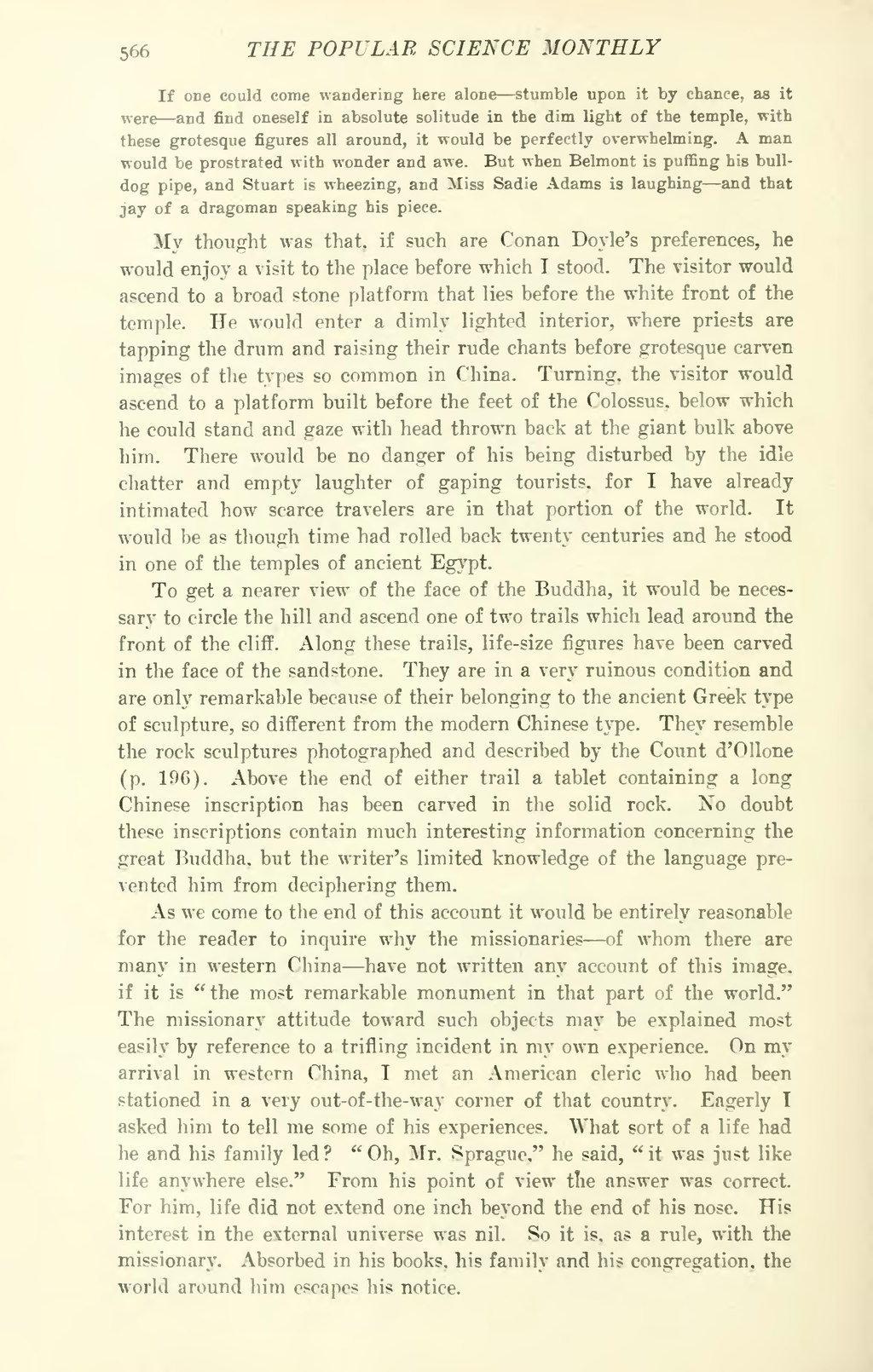If one could come wandering here alone—stumble upon it by chance, as it were—and find oneself in absolute solitude in the dim light of the temple, with these grotesque figures all around, it would be perfectly overwhelming. A man would be prostrated with wonder and awe. But when Belmont is puffing his bulldog pipe, and Stuart is wheezing, and Miss Sadie Adams is laughing—and that jay of a dragoman speaking his piece.
My thought was that, if such are Conan Doyle’s preferences, he would enjoy a visit to the place before which I stood. The visitor would ascend to a broad stone platform that lies before the white front of the temple. He would enter a dimly lighted interior, where priests are tapping the drum and raising their rude chants before grotesque carven images of the types so common in China. Turning, the visitor would ascend to a platform built before the feet of the Colossus, below which he could stand and gaze with head thrown back at the giant bulk above him. There would be no danger of his being disturbed by the idle chatter and empty laughter of gaping tourists, for I have already intimated how scarce travelers are in that portion of the world. It would be as though time had rolled back twenty centuries and he stood in one of the temples of ancient Egypt.
To get a nearer view of the face of the Buddha, it would be necessary to circle the hill and ascend one of two trails which lead around the front of the cliff. Along these trails, life-size figures have been carved in the face of the sandstone. They are in a very ruinous condition and are only remarkable because of their belonging to the ancient Greek type of sculpture, so different from the modern Chinese type. They resemble the rock sculptures photographed and described by the Count d’Ollone (p. 196). Above the end of either trail a tablet containing a long Chinese inscription has been carved in the solid rock. No doubt these inscriptions contain much interesting information concerning the great Buddha, but the writer's limited knowledge of the language prevented him from deciphering them.
As we come to the end of this account it would be entirely reasonable for the reader to inquire why the missionaries—of whom there are many in western China—have not written any account of this image, if it is “the most remarkable monument in that part of the world.” The missionary attitude toward such objects may be explained most easily by reference to a trifling incident in my own experience. On my arrival in western China, I met an American cleric who had been stationed in a very out-of-the-way corner of that country. Eagerly I asked him to tell me some of his experiences. What sort of a life had he and his family led? “Oh, Mr. Sprague,” he said, “it was just like life anywhere else.” From his point of view the answer was correct. For him, life did not extend one inch beyond the end of his nose. His interest in the external universe was nil. So it is, as a rule, with the missionary. Absorbed in his books, his family and his congregation, the world around him escapes his notice.

